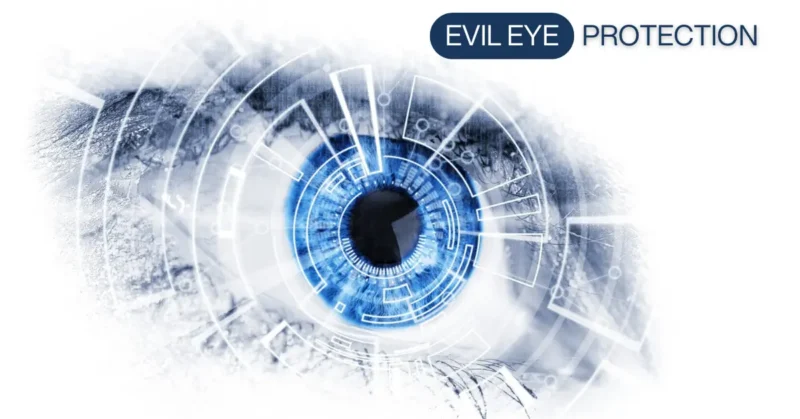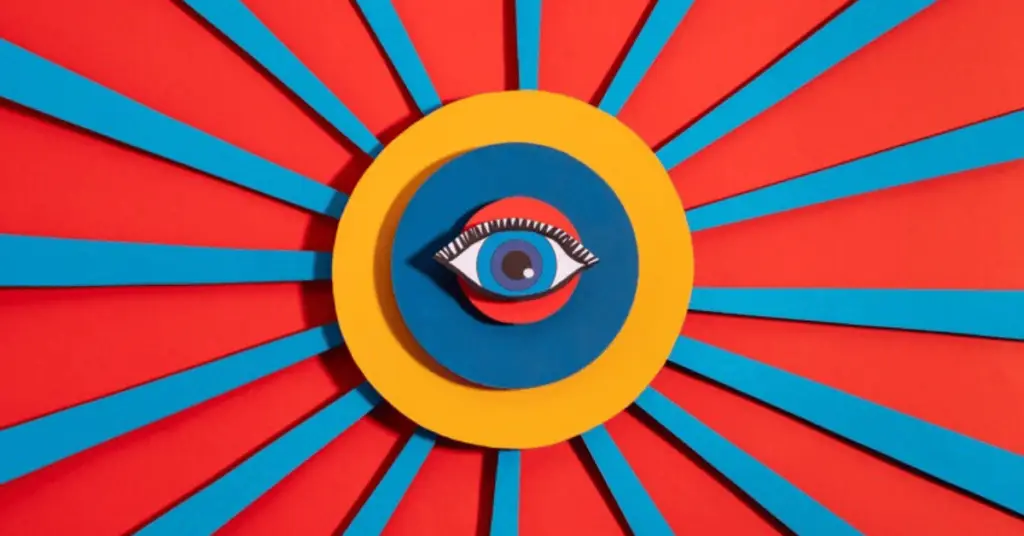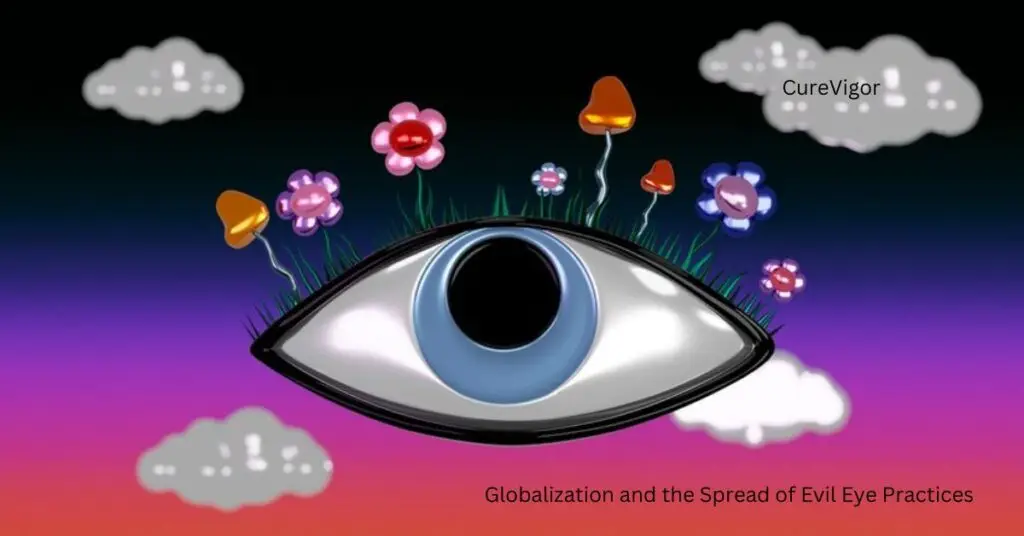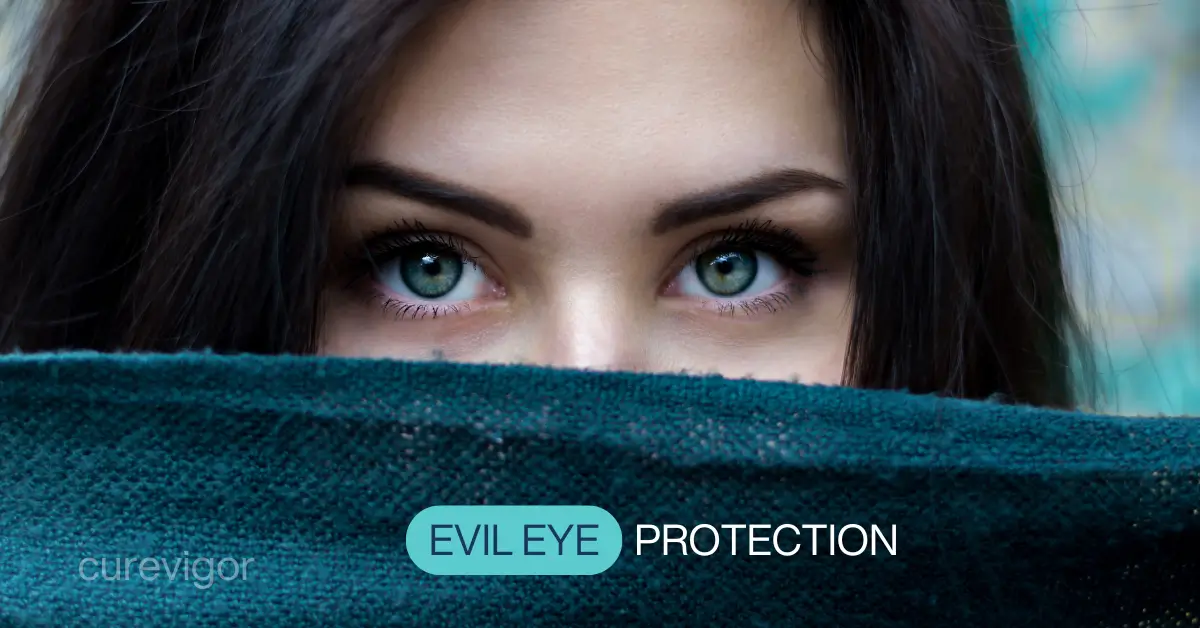Explore the meaning of the evil eye, ancient beliefs, superstitions, and powerful protection methods used across cultures to enhance luck, safety, and spirituality.
Thank you for reading this post, don't forget to subscribe!Evil Eye Meaning: Ancient Beliefs, Superstition, and Powerful Protection
The concept of the evil eye has fascinated humanity for thousands of years. Rooted in superstition, spirituality, and cultural traditions, the evil eye is believed to be a curse cast by envy or a malevolent stare.
Across ancient civilizations, people feared this invisible force, associating it with sudden illness, misfortune, or unexplained bad luck. Yet, just as the evil eye instills fear, it also inspires powerful protection methods that remain deeply ingrained in cultures worldwide.
Today, the evil eye has evolved beyond its ancient origins. From amulets and charms to modern jewelry and home décor, its presence continues to protect, empower, and inspire. But what does the evil eye truly mean?
How did ancient beliefs shape its symbolism, and why does it still hold power in today’s modern world? Let’s uncover the fascinating story.
Evil Eye Meaning
The evil eye is both a superstition and a cultural symbol. At its core, it represents the belief that jealousy or envy can manifest as harmful energy through a person’s gaze. This energy is thought to cause sickness, financial loss, infertility, or general misfortune.
Symbolically, the evil eye is depicted as a blue eye-shaped charm, designed to reflect and deflect negativity back to its source. While the design varies across cultures, the meaning remains consistent: it serves as protection against unwanted harm and spiritual danger.

Ancient Beliefs about the Evil Eye
The evil eye has been around for over 5,000 years. Civilizations from Mesopotamia, Egypt, Greece, and Rome all recorded beliefs about envious stares capable of harming others.
- Mesopotamia: Amulets were crafted from clay and inscribed with protective spells.
- Egypt: The Eye of Horus was used as a symbol of health, healing, and protection.
- Greece: The term baskania described the evil eye, often associated with envy.
- Rome: Romans used phallic charms and inscriptions to ward off evil stares.
- South Asia: In India and Pakistan, the belief in nazar is deeply ingrained, and black threads or kajal dots are used to protect children.
These beliefs reveal a common thread: human beings across continents feared the power of envy and sought ways to protect themselves.
Superstition Around the Evil Eye
The evil eye superstition originates from a universal human emotion: jealousy. In societies where sudden illnesses, crop failures, or accidents could not be explained scientifically, the evil eye became the explanation.
Common superstitions include:
- Excessive praise without protection can attract the evil eye.
- Pregnant women and children are more vulnerable to it.
- Successful or beautiful individuals often draw envious stares, making them prime targets for envy.
Even today, many people avoid boasting about good fortune for fear of “inviting the evil eye.”
Cultural Significance of Evil Eye Beliefs

From the bustling markets of Turkey to the temples of India, the evil eye meaning holds a profound place in cultural traditions. While its interpretation varies, the underlying message is consistent: it represents the danger of envy and the need for protection.
- Mediterranean cultures: In Greece, Italy, and Turkey, evil eye amulets (mati or nazar) are part of daily life. Parents pin them to babies’ clothes, drivers hang them in cars, and homeowners place them near doorways.
- Middle Eastern traditions: The evil eye is closely tied to blessings and prayers. In Arabic culture, people often say “Mashallah” (“God has willed it”) after giving compliments, as a safeguard against envy.
- In such South Asian societies, in India, Pakistan, and Bangladesh, the evil eye, also known as nazar, is widely feared. Mothers often apply a black dot on their children’s foreheads to ward it off.
This cultural significance demonstrates how the evil eye functions not only as a superstition but also as a social and spiritual safeguard.
Evil Eye as Protection from Harm
While the evil eye was feared, ancient people believed it could be countered with protective charms and rituals. The concept of “fighting fire with fire” was common—an eye-shaped symbol could repel the gaze of the jealous.
Forms of protection included:
- Amulets and charms: Crafted from glass, metal, or stone to block negative energy.
- Prayers and chants: Invocations to deities or spiritual forces to protect loved ones.
- Gestures: In some Mediterranean countries, specific hand signs were used to ward off bad luck.
These protective measures remind us that the evil eye was not just about fear—it was about resilience and belief in human ability to resist misfortune.
Good Luck and Fortune with Evil Eye Beliefs
Interestingly, the evil eye wasn’t always viewed negatively. In some traditions, protection from it was thought to bring blessings, fertility, and prosperity.
For example:
- In Greece, sailors carried evil eye charms to ensure safe voyages and bountiful harvests.
- In Egypt, amulets resembling the Eye of Horus were linked to health and renewal.
- In South Asia, rituals designed to remove the evil eye (nazar utarna) are believed to restore balance and attract good fortune.
Thus, the evil eye served a dual purpose: warding off harm and inviting abundance.
Talismans and Amulets Against Evil Eye
The use of talismans is the most enduring aspect of the evil eye tradition. These items are worn, carried, or placed in homes to absorb or deflect harmful energy.
- The Nazar bead: Most commonly blue and white, symbolizing purity and spiritual strength.
- Red threads and black threads: Used in South Asia, especially for infants and new mothers.
- Personalized charms: Items consecrated by religious leaders or spiritual healers.
Each talisman tells a cultural story, connecting people to their ancestors’ ways of seeking safety in a dangerous world.
Blue Glass Beads
Perhaps the most recognizable symbol of the evil eye, the blue glass bead is a staple in Turkey, Greece, and surrounding regions. The striking cobalt blue color represents the sky and water, natural forces believed to absorb negative energy.
- Ancient use: Archaeological evidence suggests that blue beads have been used since at least 3,000 BC.
- Cultural symbolism: Blue is associated with protection, truth, and peace.
- Modern adaptation: Today, these beads are found on jewelry, keychains, and even corporate logos as a symbol of protection.
Whether worn on a bracelet or hung above a door, the blue eye bead has become a global symbol of good luck.
The Hamsa Hand
The Hamsa hand, also called the Hand of Fatima (Islam) or the Hand of Miriam (Judaism), is one of the most potent symbols against the evil eye.
- Design: A five-fingered hand, often with an eye in the palm.
- Symbolism: Represents blessings, strength, and protection.
- Cultural overlap: Used widely across Jewish, Islamic, and Middle Eastern traditions.
Worn as jewelry or displayed in homes, the Hamsa hand has transcended religious boundaries to become a universal symbol of spiritual protection and good fortune.
Smudging and Cleansing Rituals
While physical amulets protect against the evil eye, many cultures believe in energy cleansing practices to remove harmful influences.
Common rituals include:
- Smudging with herbs: Burning sage, frankincense, or myrrh to purify spaces.
- Salt cleansing: Sprinkling salt around doorways to absorb negativity.
- Water rituals: Washing oneself or sprinkling holy water for protection.
These practices are still performed today, blending ancient spirituality with modern holistic wellness.
Modern Interpretations of Evil Eye Protection
In today’s world, the evil eye has found new meanings. It is no longer just a religious or cultural belief, but also a fashion statement, a spiritual tool, and a psychological comfort.
- Fashion jewelry: Celebrities and influencers popularize evil eye necklaces, bracelets, and rings.
- Tattoos: The symbol has become a powerful personal emblem of resilience and strength.
- Holistic practices: Energy healers incorporate evil eye symbols into meditation and visualization exercises.
This modern transformation demonstrates that the evil eye’s meaning continues to evolve, adapting to new lifestyles while preserving its ancient spirit.
Evil Eye in Home Decor
Beyond jewelry, the evil eye symbol has become popular in interior design and home protection.
Examples include:
- Wall hangings: Blue eye symbols placed above entryways.
- Ceramic tiles Are Used in kitchens and bathrooms for both aesthetic appeal and energy efficiency.
- Ornaments and paintings: Artistic interpretations that merge style with spiritual defense.
For many, these items are more than decorations—they are spiritual guardians of the household.
Spiritual Practices and the Evil Eye
The evil eye also appears in modern spirituality. Many practitioners integrate it into:
- Meditation sessions for energy shielding.
- Chakra balancing rituals mainly focus on the third eye chakra.
- Crystal healing, where stones like black tourmaline or lapis lazuli complement evil eye amulets.
This fusion of ancient superstition and modern spiritual practices keeps the evil eye relevant in today’s culture, which is increasingly focused on wellness and self-care.
Evil Eye in Psychology
The evil eye meaning extends beyond superstition—it taps into the psychology of human fear, envy, and the desire for protection. From a psychological perspective, belief in the evil eye is rooted in the profound emotional impact of being watched, judged, or envied.
- Fear of envy: Humans are naturally sensitive to jealousy. The belief in the evil eye serves as a coping mechanism, explaining sudden misfortune as the result of envy rather than randomness.
- Self-protection: Wearing an evil eye amulet can provide comfort, reducing anxiety about negative attention.
- Community bonding: Shared rituals and practices surrounding the evil eye foster a sense of cultural identity and belonging.
In essence, the evil eye serves as a psychological shield, providing people with reassurance in uncertain situations.
Sociological Implications of Evil Eye Belief
Sociologically, the evil eye plays a significant role in shaping how communities interact. It shapes behaviors, traditions, and even social hierarchies.
- Regulating pride: In many societies, showing off wealth, beauty, or success was discouraged for fear of attracting the evil eye. This helped maintain social harmony.
- Community rituals: Families and villages often performed collective protection rituals, reinforcing shared belief systems.
- Social control: Elders or spiritual leaders gained authority by prescribing protection methods against the evil eye.
Thus, the evil eye isn’t just a superstition—it has long acted as a social regulator across cultures.
Scientific and Skeptical Views
Despite its cultural importance, many scientists view the evil eye as a symbol of superstition rather than a supernatural force.
- Psychological explanations: Misfortunes attributed to the evil eye may result from stress, anxiety, or psychosomatic illness caused by fear.
- Skeptical viewpoint: Skeptics argue that belief in the evil eye perpetuates fear instead of encouraging practical solutions to problems.
- Anthropological perspective: Scholars see it as a universal response to envy—an attempt by societies to explain unpredictable events.
Even though science does not support the literal existence of the evil eye, it acknowledges the power of belief in shaping human behavior.
Commercialization of Evil Eye Protection

The evil eye has moved from sacred talismans to a booming global industry. Jewelry designers, fashion houses, and lifestyle brands now incorporate evil eye motifs into their products.
- Jewelry industry: Bracelets, necklaces, rings, and earrings featuring the evil eye are sold worldwide.
- Luxury fashion: Brands like Dior and Gucci have incorporated evil eye symbols into their clothing lines.
- Tourist markets: In Turkey, Greece, and Egypt, evil eye souvenirs are among the top-selling items.
This commercialization has made the evil eye accessible globally, but it also raises questions about cultural appropriation vs. appreciation.
Globalization of Evil Eye Symbolism

Trade, migration, and media have spread the evil eye far beyond its original roots. Today, it is recognized across continents as a symbol of protection and luck.
- Cultural exchange: The evil eye has been embraced by people who may not belong to its originating cultures.
- Digital platforms: Social media influencers promote evil eye jewelry and tattoos, contributing to its global trend.
- Hybrid practices: In some regions, the evil eye blends with local traditions, creating new spiritual practices.
This globalization illustrates how ancient symbols evolve to accommodate a modern, interconnected world.
Artistic Representations of the Evil Eye
Throughout history, the evil eye has inspired art, literature, and popular culture.
- Ancient art: Greek pottery and Egyptian amulets often displayed protective eyes.
- Medieval manuscripts: Evil eye symbols were drawn as protective motifs in sacred texts.
- Modern pop culture: Movies, music videos, and tattoos frequently showcase the evil eye as a symbol of mystique and resilience.
The continued artistic representation ensures that the evil eye remains both a spiritual symbol and a cultural icon.
Evil Eye in Fashion
In the fashion world, the evil eye has become a trend with meaning. Designers and celebrities often wear evil eye jewelry not only as an accessory but also as a statement of empowerment and protection.
- Celebrities, such as Meghan Markle, Gigi Hadid, and Rihanna, have been spotted wearing jewelry featuring the evil eye.
- Street fashion: Affordable evil eye bracelets and necklaces are sold in markets worldwide.
- High-end design: Luxury fashion houses incorporate the motif into couture collections.
This fashion trend has helped normalize and globalize the belief in the evil eye.
Evil Eye in Modern Spirituality
For those seeking holistic wellness, the evil eye has been reinterpreted through spiritual practices:
- Crystal healing: Evil eye charms are often paired with crystals like black obsidian or amethyst for protection.
- Energy work, such as Reiki and chakra healing, sometimes utilizes evil eye symbols as visualization tools.
- Meditation: Practitioners imagine the evil eye as a shield of light protecting them from negative energy.
These modern practices demonstrate that the evil eye is no longer just a cultural phenomenon—it is now part of the global spiritual wellness movement.
Choosing the Right Evil Eye Talisman
With so many variations, selecting the right talisman depends on cultural respect and personal belief.
- Blue bead: Traditional, widely accepted, and linked with protection.
- Hamsa hand: Offers both protection and blessings.
- Custom charms: Personalized items carry symbolic meaning tailored to the wearer.
The key is to choose a talisman that resonates with your intention for protection and balance.
Daily Life Applications of Evil Eye Protection
Today, many people incorporate the evil eye into everyday routines:
- Wearing jewelry for constant protection.
- Hanging charms in cars for safe travel.
- Placing wall hangings in homes for peace and harmony.
- Utilizing digital wallpapers featuring evil eye symbols as a modern form of protection.
These practices demonstrate how ancient beliefs have seamlessly integrated into modern lifestyles.
Ethical Considerations
As the evil eye spreads globally, it is essential to distinguish between cultural appreciation and appropriation.
- Appreciation: Respecting the origins and using the symbol with awareness of its cultural and spiritual meaning.
- Appropriation: Commercializing or using the symbol without acknowledging its roots, stripping it of context.
To honor the symbol, one must learn its history and significance, rather than simply wearing it as a trend.
Trends and Future of Evil Eye Beliefs
Looking ahead, the evil eye is likely to continue evolving in response to technological advancements and cultural shifts.
- Digital amulets: Apps and online platforms may offer “virtual protection.”
- AR/VR rituals: Spiritual cleansing through immersive experiences may emerge.
- Fusion practices: The evil eye will continue blending with local beliefs worldwide.
This adaptability ensures the evil eye’s enduring relevance in the modern age.
Real-Life Examples and Case Studies
- Turkey: The nazar boncuk is so embedded in culture that it is gifted at births, weddings, and new home blessings.
- India: Families still perform nazar utarna rituals using chilies, salt, or lemon to ward off curses.
- Greece: Compliments are often followed by protective phrases like “ftou ftou” (spitting sound to ward off evil).
These examples demonstrate that the evil eye is not just a relic of history—it is a living tradition that endures.
Impact of Evil Eye Belief on Communities
Belief in the evil eye strengthens community identity and unity. Rituals, charms, and protective phrases unite people through shared cultural values and beliefs. It also influences:
- How success is displayed (modesty is encouraged).
- How rituals are passed down (children learn early about protection methods).
- How fear is managed (belief transforms anxiety into action).
Thus, the belief in the evil eye has both protective and social functions.
Conclusion
The evil ‘seye’s meaning has journeyed from ancient superstition to modern spirituality, weaving its way through history as both a symbol of fear and protection. From Mesopotamian amulets to today’s fashion jewelry, it embodies humanity’s universal desire to safeguard against envy and negativity.
Its enduring presence in art, religion, psychology, and modern lifestyles proves that the evil eye is more than a superstition—it is a timeless reminder of human resilience. Whether worn as a charm, displayed at home, or used in spiritual practice, it remains a powerful protection symbol across cultures.
Read more articles on Healthy Lifestyle.
You might like:

